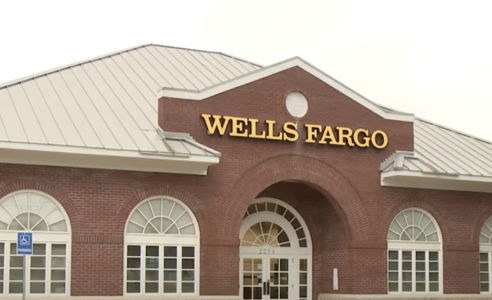Could your Wells Fargo account be flagged? Here’s how to make sure your money doesn’t get sent to the state
By
Veronica E.
- Replies 0
For many of us, a savings account tucked away for emergencies or a grandchild’s future feels like a safe, secure place to store funds.
But what if that unused account is quietly putting your money at risk—without any warning signs?
That’s exactly what’s happening to thousands of Wells Fargo customers in 2025.
Without realizing it, some are waking up to find their accounts closed and their money transferred to the state’s unclaimed property office, all due to inactivity.
It’s not a scam or a sudden change in policy—it’s a longstanding rule that’s now affecting more people than ever.
Here’s what you need to know to keep your savings safe and under your control.
Banks are legally required to monitor accounts for inactivity.
At Wells Fargo, if there’s no customer-initiated activity—such as deposits, withdrawals, or transfers—for 16 months, the account may be considered "dormant."
And once an account is flagged, the bank begins a process called “escheatment,” which involves transferring your funds to the state’s unclaimed property office.
While intended to protect your money, the process can create delays and confusion when you try to get it back.
Once your account is deemed inactive, Wells Fargo may close it and send the balance to your state government.
While some customers receive notices by mail or email, the bank isn’t legally required to notify everyone, so it’s possible to lose access to your funds without knowing.
The money doesn’t disappear—it’s held by your state’s unclaimed property office—but retrieving it can be a lengthy, sometimes confusing process.
Many people opened extra accounts during the pandemic for budgeting, savings, or family support.
As daily routines returned to normal, those accounts may have been forgotten.
With fewer paper statements and more digital banking, it's easy to overlook an unused account until it's too late.
The good news? Avoiding this issue is easy if you stay proactive. Here’s how:
Even a minor deposit, withdrawal, or card swipe counts.
It might not always count as activity, but logging in helps you monitor changes.
Use your calendar to check on your accounts every few months.
Make sure Wells Fargo has your current mailing address, phone number, and email.
If you have multiple accounts you rarely use, consider merging them to reduce oversight stress.
Don't worry—there’s still a way to get your funds back.
Each state has a dedicated unclaimed property office where you can search and file a claim.
Be prepared to verify your identity, and expect some processing time.
Start your search at MissingMoney.com or visit your state’s official website.
At The GrayVine, we know that for many readers, every dollar matters—whether it’s earmarked for retirement, helping loved ones, or simply enjoying life.
Losing access to your own money due to a technicality can feel frustrating, but it’s preventable with a few simple steps!
Read next: This woman left a 100% tip at Starbucks—or did she? Discover what happened and how to protect yourself!

Has an account of yours been closed unexpectedly? Were you able to recover your funds from the state? Or do you have a helpful tip to keep accounts from going dormant? We’d love to hear from you in the comments—your experience could help someone else avoid the same issue!
But what if that unused account is quietly putting your money at risk—without any warning signs?
That’s exactly what’s happening to thousands of Wells Fargo customers in 2025.
Without realizing it, some are waking up to find their accounts closed and their money transferred to the state’s unclaimed property office, all due to inactivity.
It’s not a scam or a sudden change in policy—it’s a longstanding rule that’s now affecting more people than ever.
Here’s what you need to know to keep your savings safe and under your control.
Why Wells Fargo may be closing your account
Banks are legally required to monitor accounts for inactivity.
At Wells Fargo, if there’s no customer-initiated activity—such as deposits, withdrawals, or transfers—for 16 months, the account may be considered "dormant."
And once an account is flagged, the bank begins a process called “escheatment,” which involves transferring your funds to the state’s unclaimed property office.
While intended to protect your money, the process can create delays and confusion when you try to get it back.
Also read: Is your money trapped? Find out why Wells Fargo has started freezing bank accounts.
What qualifies as an inactive account?
- No customer-initiated activity for 16 months or more
- No deposits, withdrawals, or manual transfers
- No payments started by the account holder
- Automatic transactions, fees, or interest do NOT count
What happens when your account is closed?
Once your account is deemed inactive, Wells Fargo may close it and send the balance to your state government.
While some customers receive notices by mail or email, the bank isn’t legally required to notify everyone, so it’s possible to lose access to your funds without knowing.
The money doesn’t disappear—it’s held by your state’s unclaimed property office—but retrieving it can be a lengthy, sometimes confusing process.
Also read: Closing time? Major banks quietly shutter over 100 locations
Why is this becoming more common now?
Many people opened extra accounts during the pandemic for budgeting, savings, or family support.
As daily routines returned to normal, those accounts may have been forgotten.
With fewer paper statements and more digital banking, it's easy to overlook an unused account until it's too late.
Simple steps to keep your account active
The good news? Avoiding this issue is easy if you stay proactive. Here’s how:
1. Make a small transaction
Even a minor deposit, withdrawal, or card swipe counts.
2. Log in often
It might not always count as activity, but logging in helps you monitor changes.
3. Set reminders
Use your calendar to check on your accounts every few months.
4. Update your contact info
Make sure Wells Fargo has your current mailing address, phone number, and email.
5. Consolidate accounts
If you have multiple accounts you rarely use, consider merging them to reduce oversight stress.
Also read: Imagine waking up to $81 TRILLION in your bank account—here’s how it happened!
What if your money has already been sent to the state?
Don't worry—there’s still a way to get your funds back.
Each state has a dedicated unclaimed property office where you can search and file a claim.
Be prepared to verify your identity, and expect some processing time.
Start your search at MissingMoney.com or visit your state’s official website.
At The GrayVine, we know that for many readers, every dollar matters—whether it’s earmarked for retirement, helping loved ones, or simply enjoying life.
Losing access to your own money due to a technicality can feel frustrating, but it’s preventable with a few simple steps!
Read next: This woman left a 100% tip at Starbucks—or did she? Discover what happened and how to protect yourself!
Key Takeaways
- Wells Fargo may close inactive accounts and transfer funds to state unclaimed property offices.
- Inactivity is defined as 16 months without customer-initiated transactions (automated charges don’t count).
- Not all customers are notified before closure, so it's important to monitor accounts regularly.
- Simple actions—like small transactions or updating contact info—can keep your account active.
Has an account of yours been closed unexpectedly? Were you able to recover your funds from the state? Or do you have a helpful tip to keep accounts from going dormant? We’d love to hear from you in the comments—your experience could help someone else avoid the same issue!







